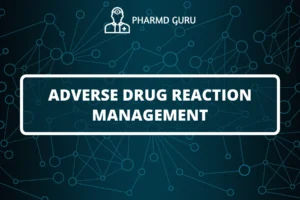Patient data analysis plays a crucial role in evaluating drug therapy and optimizing patient care in clinical practices. By examining a patient’s case history, healthcare professionals gain valuable insights into the patient’s medical background, treatment history, and current health status. In this article, we will explore the structure and use of a patient’s case history in evaluating drug therapy, as well as provide an understanding of common medical abbreviations and terminologies used in clinical practices.
SCROLL DOWN TO THE BOTTOM OF THE PAGE FOR ACTUAL NOTES
TABLE OF CONTENTS:
- Introduction
- The Importance of Patient Data Analysis in Drug Therapy Evaluation
- Structure of a Patient’s Case History
- Utilizing Case History in Drug Therapy Evaluation
- Understanding Common Medical Abbreviations and Terminologies
1. Introduction
Patient data analysis involves the systematic examination and interpretation of a patient’s medical information, including their case history, laboratory results, medication records, and diagnostic reports. By analyzing this data, healthcare professionals can make informed decisions regarding drug therapy and patient management.
2. The Importance of Patient Data Analysis in Drug Therapy Evaluation
Patient data analysis is vital for several reasons:
- Personalized treatment approach: By analyzing patient data, healthcare professionals can tailor drug therapy to meet the specific needs of each individual patient, considering factors such as medical history, comorbidities, allergies, and medication interactions.
- Identifying contraindications and precautions: Patient data analysis helps identify contraindications and precautions associated with certain medications, ensuring the safe and effective use of drugs.
- Monitoring treatment outcomes: Regular analysis of patient data allows healthcare professionals to assess the effectiveness of drug therapy, monitor treatment response, and make necessary adjustments to optimize patient outcomes.
- Improving medication adherence: Patient data analysis helps identify potential barriers to medication adherence, allowing healthcare professionals to develop strategies to improve patient compliance and adherence to prescribed therapies.
3. Structure of a Patient’s Case History
A patient’s case history typically includes the following components:
- Demographic information: This includes the patient’s name, age, gender, contact details, and relevant identification numbers.
- Chief complaint: The primary reason for the patient’s visit or hospital admission, stated in the patient’s own words.
- Present illness: A detailed description of the current medical condition, including symptoms, onset, duration, severity, and any relevant factors that may have contributed to the illness.
- Past medical history: A comprehensive overview of the patient’s previous medical conditions, surgeries, hospitalizations, and chronic illnesses.
- Medication history: A list of current and past medications, including prescription drugs, over-the-counter medications, and supplements, along with dosages, frequencies, and durations of use.
- Allergies and adverse reactions: Any known allergies or adverse reactions to medications, foods, or other substances.
- Family history: Information about any significant medical conditions that run in the patient’s family, such as genetic disorders, cardiovascular diseases, or cancers.
- Social history: Relevant lifestyle factors, including occupation, tobacco use, alcohol consumption, and recreational drug use.
- Review of systems: A systematic review of the patient’s major organ systems, covering symptoms and signs that may provide additional diagnostic clues.
- Physical examination findings: The healthcare professional’s observations and findings from the physical examination of the patient.
- Laboratory and diagnostic test results: Results of laboratory tests, imaging studies, and other diagnostic procedures relevant to the patient’s condition.
4. Utilizing Case History in Drug Therapy Evaluation
The patient’s case history is a valuable resource for evaluating drug therapy. Here are some ways healthcare professionals utilize the case history:
- Assessing medication appropriateness: The case history helps determine the suitability of specific medications for the patient based on their medical conditions, allergies, and previous treatment responses.
- Identifying potential drug interactions: Analyzing the patient’s medication history and allergies helps identify potential drug-drug interactions and drug-allergy interactions that may impact the safety and efficacy of drug therapy.
- Adjusting dosage regimens: Patient-specific factors, such as renal or hepatic impairment, may require dosage adjustments. The case history provides information necessary for determining appropriate dosing regimens.
- Considering comorbidities: The patient’s past medical history helps healthcare professionals consider comorbidities that may influence drug therapy decisions. For example, a patient with diabetes may require medications that do not worsen blood glucose control.
- Monitoring treatment response: By comparing current symptoms and physical examination findings with the patient’s case history, healthcare professionals can assess the effectiveness of drug therapy and make necessary modifications if needed.
5. Understanding Common Medical Abbreviations and Terminologies
In clinical practices, medical abbreviations and terminologies are commonly used for concise communication and documentation. Here are some examples:
- CVA: Cerebrovascular accident (stroke)
- NPO: Nil per os (nothing by mouth)
- PRN: Pro re nata (as needed)
- BID: Twice daily
- QID: Four times daily
- QD: Once daily
- TID: Three times daily
- HbA1c: Glycated hemoglobin (measure of long-term blood glucose control)
- MRI: Magnetic resonance imaging
- PO: Per os (by mouth)
It is essential to understand and interpret these abbreviations and terminologies accurately to avoid miscommunication and ensure patient safety.
ACTUAL NOTES




